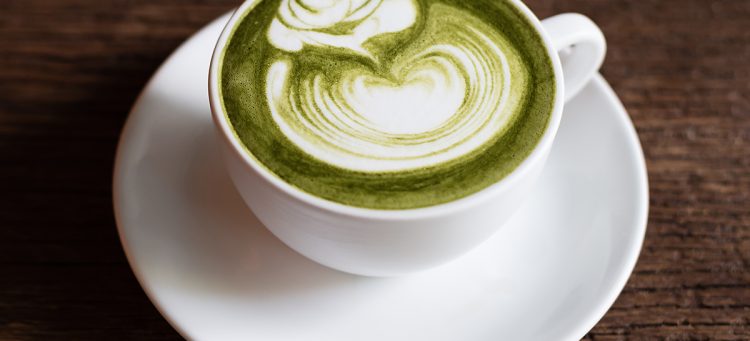
Trending
Mat•cha (n.): Not your regular cup of tea
November, 2016
Forget pumpkin-spice lattes. This winter, Canadians are backing a different brew. Credited with being the ultimate superfood, matcha is a versatile plant that packs a serious punch. While the tea has been revered in Eastern cultures for centuries, it’s more recently making local headlines as an all-around gateway to health. Whether you steep it or eat it, matcha is good for the body and the brain. Here’s a look at what all the fuss is about.
Tea-time Tradition
The origin of matcha is spiritual in nature, rooted in ancient religious customs. A 12th century Japanese priest named Myoan Eisai is believed to have been introduced to the medicinal tea while visiting China. Upon returning home, he began including it in Zen Buddhism practices. Gradually, the tea ceremony grew in popularity, and status-significant tea houses ranging from modest to extravagant popped up across the country. Traditional Japanese tea ceremonies serve high-quality matcha tea during social gatherings that place an avid focus on the guest experience. All aesthetics are carefully considered: art pieces, landscaping, flowers and decor, traditional garments—even special utensils and vessels. The tea is often paired with a special meal, and the conversation can be deeply philosophical or light and entertaining. Serving the tea is an art form in itself, and the practice often includes periods of meditation and silent contemplation.
Cultivating Quality
Like all true teas, matcha stems from the Camellia sinensis plant. Its leaves are
plucked, and varying levels of fermentation create different forms of tea: green tea is unfermented, oolong tea is partially fermented and black tea is fully fermented. Matcha is a traditional green tea, and the highest quality yields are held to superior standards on colour, flavour and finish. The matcha cultivation process is unique in that the tea is shade-grown for weeks prior to harvest, which is said to increase the level of chlorophyll and amino acids in the plant as it searches for light. Only the highest quality leaves are harvested, with younger greener leaves being deemed the most valuable. Leaves are steamed, dried and destemmed before being carefully stone-ground in a time-consuming process that avoids heat damage. They are then stored away from light and oxygen to preserve their quality.
Plant Powerhouse
Matcha differs from other types of tea in that the leaves are not merely steeped and then discarded; they are ingested whole in the form of matcha powder. This action, paired with the careful cultivation practices of high-quality sources, is believed to dramatically increase the antioxidant and mineral value of the tea. In fact, matcha has six times the antioxidant value of the celebrated goji berry and seven times the value of dark chocolate. It is also extremely high in EGCG, a compound that reportedly inhibits the growth of cancer cells, improves brain function, promotes weight loss and has multiple cardiovascular benefits. Drinking matcha regularly is said to boost memory and concentration, increase energy levels, improve cholesterol levels, reduce gastrointestinal issues and strengthen the immune system. The tea can be a rich source of potassium, calcium, iron and vitamins A, B, C, E and K, and it has about as much caffeine in it as a cup of coffee
Consider the Source
To enjoy the most health benefits from matcha, splurge on a superior source. True matcha is significantly more expensive than other teas—be wary of inexpensive imposters that claim matcha’s advantages without its price tag. Consider also the grade of matcha that you need: ceremonial and classic grades are the top choices for drinking the tea straight, and their cost consistently reflects their quality. Café-grade matcha can be added to lattes and smoothies, and kitchen grade can be used in soups, desserts and a ton of other recipes. Try to avoid powdered mixes that are flavoured to mask matcha’s distinct umami flavour; they are often full of sugar and other random ingredients, such as powdered milk. t8n
Serve Hot (and Often)
To brew the perfect cup of matcha tea, use a small sifter to sift one or two teaspoons of matcha powder into a cup or bowl. Add two to three ounces of hot water—the temperature should be just below boiling point. Whisk until the tea appears frothy.
Quality Q&A
Not all matcha products are created equal. The following indicators can help you determine if your matcha tea comes from a quality source:
Originates from Japan
Vibrant green colour
Very finely ground, soft powdery feel
Sweet, vegetal smell
Clean taste (not bitter)
Creamy finish
Remains smooth after whisking












